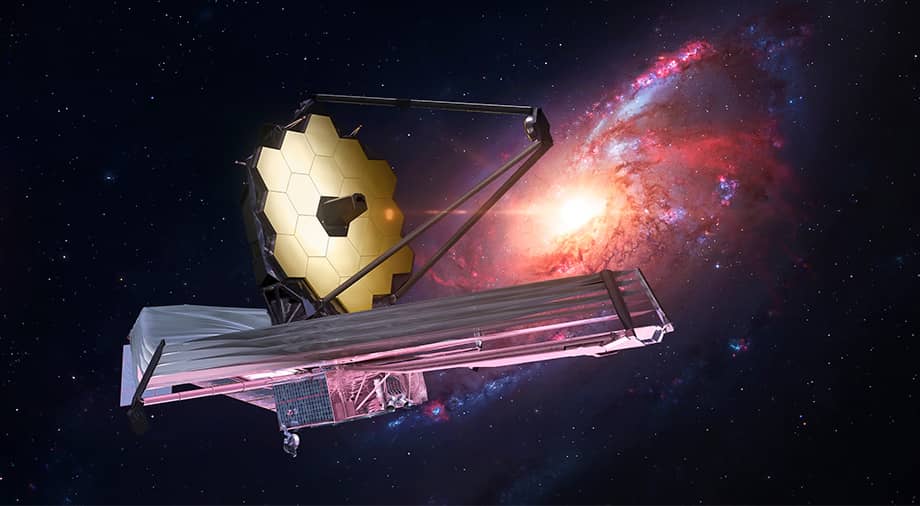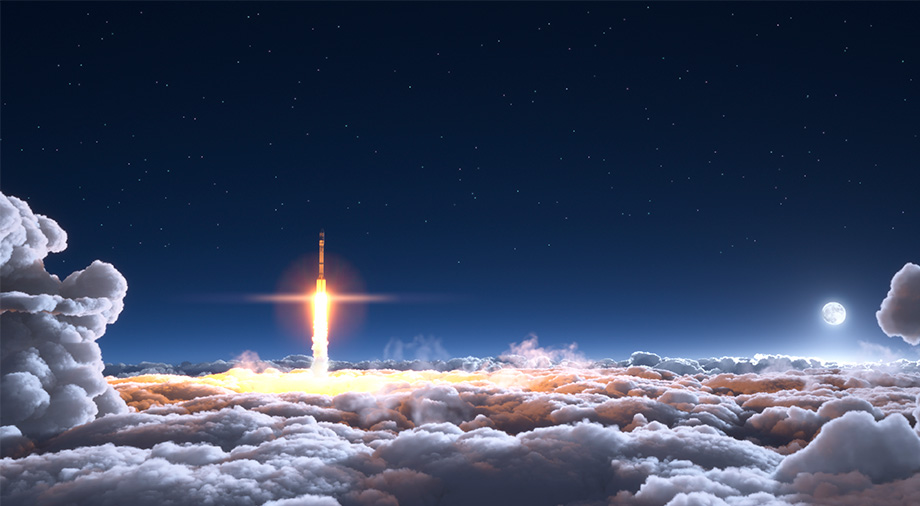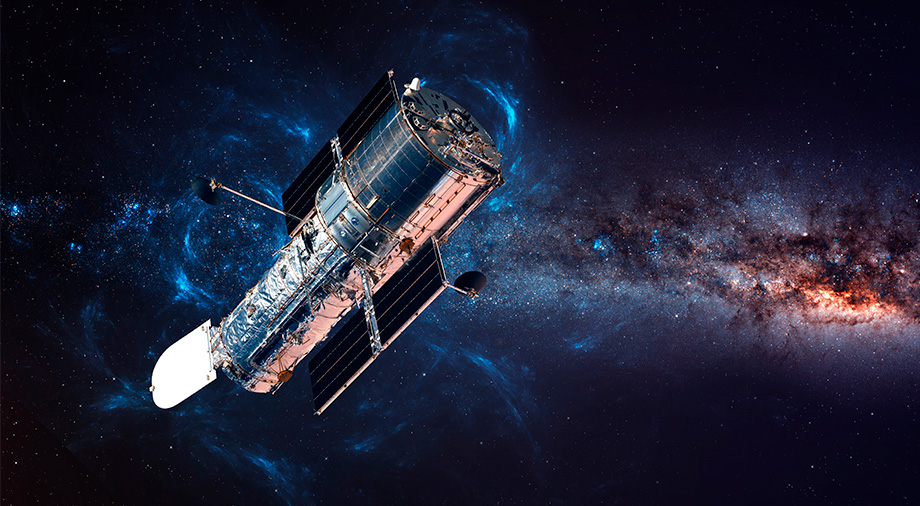In the mid-1990s, astronomy entered what could be called its golden age. The digital revolution and the launch of the Hubble telescope allowed scientists to make many high-profile discoveries that significantly expanded our knowledge of space.
But science never stands still. Even in this heyday, astronomers had begun to think about the next step: a space observatory that would become a kind of time machine, allowing us to look at the edge of the universe and see objects that formed immediately after the Big Bang. Thus, the project to build a new generation infrared telescope, named for former NASA administrator James Webb, was born. However, at that time, no one suspected that it would take another quarter century to send it into space.
A 25-year journey
The development of the James Webb telescope began in 1996. Surprisingly, NASA had hoped that the new telescope’s budget would be just $500 million, a rather modest amount compared to the price for its predecessor, the Hubble. However, even preliminary estimates showed that this figure was overly optimistic, and that the observatory wouldl cost much more.
The fact was that the new telescope was slated to be equipped with an unprecedented 8-meter mirror (compared to the 2.4 m mirror on the Hubble). This immediately posed a rather serious challenge for the designers: this mirror would be larger than both the shuttle’s cargo bay and the nose fairing of any launch vehicle. There was only one way to send it into space: make the whole structure foldable. But NASA had never before created anything like this. The technology had to be developed from scratch, which required both a substantial investment of time and resources. A similar situation arose with James Webb’s solar panels. As a result of its giant, it could also be launched into space only in a folded form.
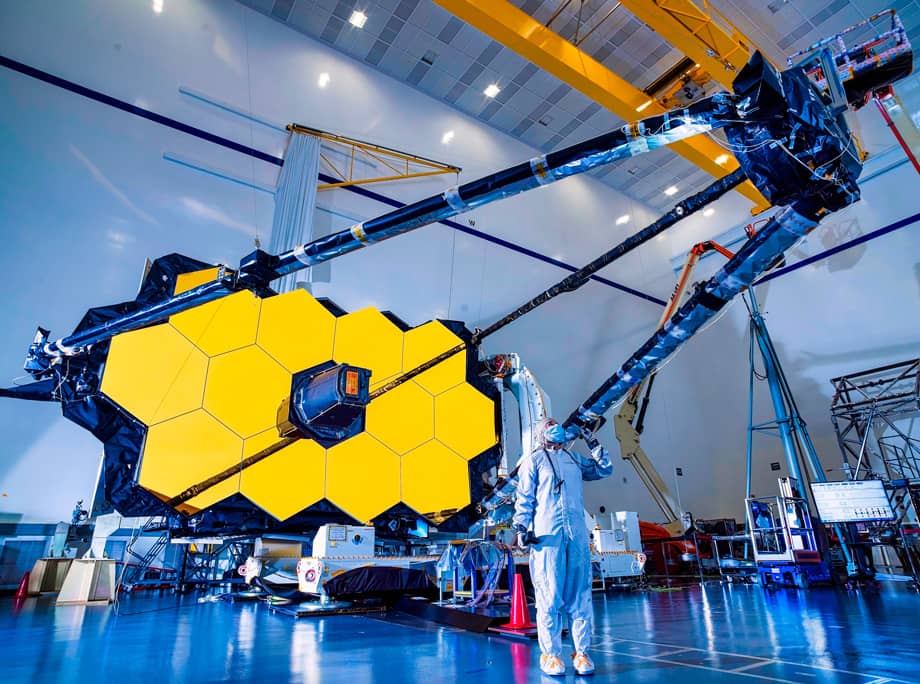
However, thanks to the support of the American scientific community, NASA decided to give the green light to the project. In the early 2000s, the agency began manufacturing the first components of the telescope. Then its budget was estimated at $ 2.5 billion, and the launch was planned for 2011.
However, due to technical difficulties associated with the design of the telescope’s mirror and sunshield, the project’s budget began to skyrocket. As a result, NASA decided to reduce the observatory’s mirror diameter to 6.5 meters and simplify some of its scientific instruments. They also brought in foreign partners. The European Space Agency (ESA) agreed to provide €700 million and also provided an Ariane 5 rocket to launch James Webb. The Canadian Space Agency (CSA) added another $200 million. In exchange, the ESA received 15% of the telescope’s total observing time, while the Canadians received 5%.
After making all its technical changes in 2008, NASA finally agreed on a preliminary design for the observatory. By this point, James Webb’s cost had risen to a dizzying $6.5 billion (not including the financial contributions of the ESA and CSA), and its launch had been pushed back to 2015-2016.
However, the next year, NASA announced that it needed at least another $2 billion to complete the construction of James Webb, and that the telescope itself would not be ready until 2018. This led to the US Congress almost closing the project. As with Hubble, scientists came to the rescue. The American scientific community carried out an information campaign in the press, explaining the importance of the telescope for the future of science. It paid off, and Congress agreed to continue funding.
Alas, these were far from the last difficulties the project would face. During testing, engineers repeatedly found problems in the deployment mechanisms of the primary mirror and James Webb sunshield. Each such problem led to a new pushback of the launch date and raised the project’s already massive cost. The Covid-19 pandemic also dealt a blow, pushing the launch of the telescope back by almost a year.
In the end, although it had seemed impossible, the James Webb telescope project was brought over the finish line. The telescope successfully passed its final tests, after which it was transported to the Kourou cosmodrome in French Guiana. The James Webb telescope launched into space on December 25, 2021, making a great Christmas present for astronomers around the world.
After the successful launch, NASA engineers began deploying the telescope’s sunshield and mirror. Despite some apprehension, these procedures were completed without any problems. Then began a five-month period of cooling and calibrating the observatory’s scientific instruments. The James Webb telescope is expected to begin its very busy program of operations in early summer 2022.
See the Big Bang
The James Webb is often referred to as the “new Hubble,” or at least as its successor, but this comparison is not quite correct. Hubble studies the universe in the ultraviolet, visible, and also in the near-infrared segments of the electromagnetic spectrum. But its instruments are not able to capture the “longer” infrared waves. Ground-based telescopes cannot see them either, since most infrared radiation is absorbed by the earth’s atmosphere. James Webb, on the other hand, is specifically designed for conducting observations in the infrared range.
Why are infrared waves so important to astronomers? They make it possible to observe celestial bodies with extremely large redshifts. We are talking about stars and galaxies that are at incredibly great distances from the Earth. As a result, the wavelength of the light emitted by them has increased so much that it became infrared radiation. That is why James Webb is sometimes called an “astronomical time machine.” The telescope’s mirror of unprecedented size and its ability to observe in the infrared range will allow it to literally look beyond the edge of the universe, and see what no other telescope in the world can see.
But infrared observation is suited not only for these purposes. Unlike visible light, infrared radiation passes much better through the dust clouds which make it difficult for astronomers to study, say, regions of active star formation or the center of our Milky Way. In addition, infrared observations are optimal for searching and studying objects that are colder than stars. We are talking about things like brown dwarfs, protoplanetary disks, exoplanets, comets, and asteroids.
As explained already, one of James Webb’s main tasks will be the study of objects that formed shortly after the Big Bang. The observatory will be able to see the light of the earliest stars and galaxies. Studying them will help scientists answer a number of key cosmological questions about how the universe came to be as it is today.
In addition to searching for the first galaxies, James Webb will hunt for exoplanets. It will be able not only to find extrasolar worlds, but also to conduct a chemical analysis of their gas shells in order to identify possible indicators of suitability for life. JWST is also expected to be capable of detecting satellites of exoplanets.
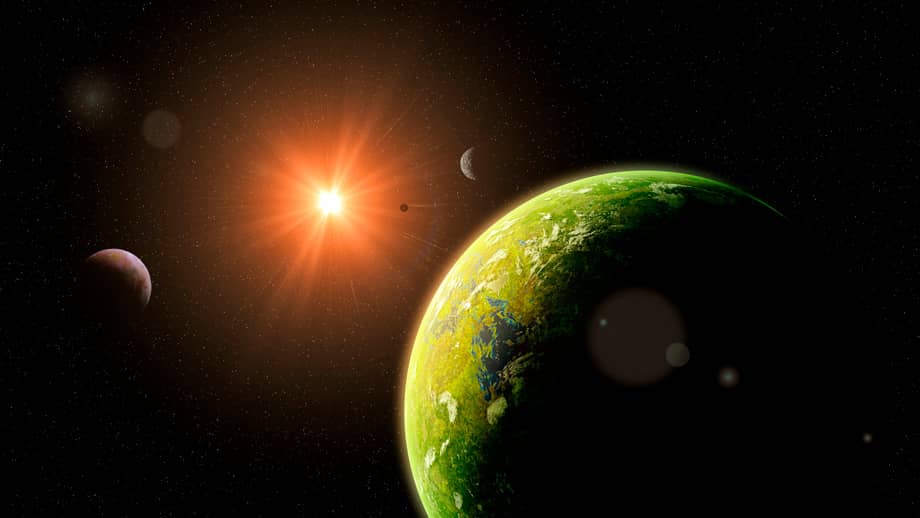
The observatory will be used for other purposes as well, including the study of black holes, molecular clouds, and protoplanetary disks. It will also be used to study our solar system, particularly the objects orbiting the giant planets, which likely contain oceans underneath their icy surfaces. The telescope will likely also be used in projects to study comets and objects in the Kuiper Belt. Perhaps it will be connected to the search for a hypothetical planet X.
James Webb is designed for a nominal service life of five years, but NASA hopes it will last much longer. Its operating lifespan will depend on several key factors. One of them is fuel reserves. The telescope needs to maintain its position at a distance of 1.5 million km from the Earth at the Lagrange point L₂ of the Sun-Earth system. This is due to the need to minimize the impact of sunlight reflected from the surface of our planet and the moon. Thanks to the successful operation of the Ariane 5 rocket during launch and the accuracy of its maneuvers, James Webb has approximately 20 years of fuel left, according to recent reports.
The life of the observatory may also be affected by its supply of coolant (liquid helium), which is needed to maintain the operating temperature of its scientific instruments. James Webb has a closed cooling system, but some leaks are still inevitable. When the coolant runs out, the telescope will lose the ability to observe in most of the infrared range. However, this will happen only after many, many years.
Observatories of the future
Despite the importance of James Webb for science, we should not forget that it is not the only telescope in the new generation. Right now, a number of projects for numerous observatories are being developed, which will be put into operation within the next decade. It is worth discussing the most significant of them.
Let’s start with ground-based observatories. In 2019, ground was broken on a huge tower atop Chile’s Cerro Armazones, which will house the so-called Extremely Large Telescope (ELT). Once completed, it will be the largest optical observatory on earth.
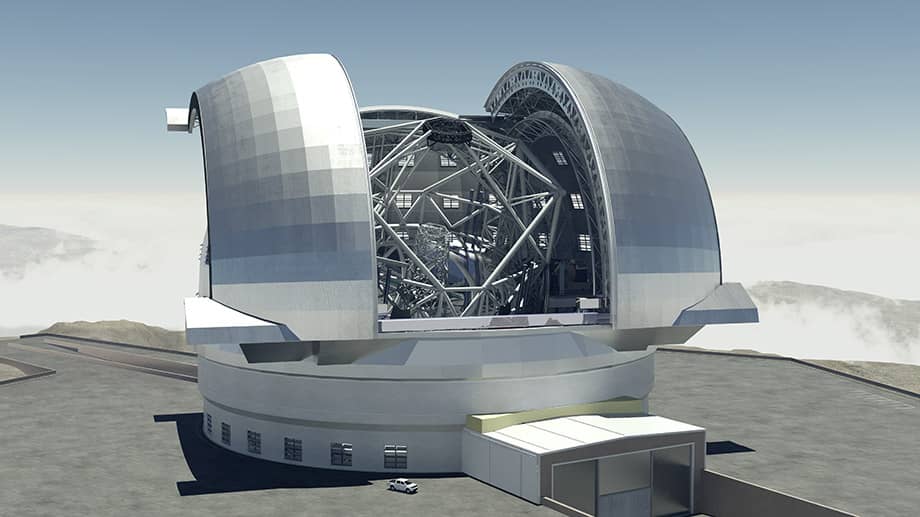
The ELT tower will house a 39-meter main mirror, consisting of 798 individual hexagonal segments with a total area of 978 square meters. The diameter of the secondary mirror will be 4.2 m, while the tertiary will be 3.75 m wide. With their help, the observatory will be able to collect 15 times more light than the largest operating optical telescopes.
The design of the ELT involves the use of a fundamentally new adaptive-optical technology that is capable of correcting image distortions caused by the earth’s atmosphere so well that its images will be clearer than photographs from space. It is expected that the new observatory will be able to directly image exoplanets, study their atmospheres, observe the birth of new planetary systems, and also help measure the acceleration of the expansion of the Universe. Its commissioning is scheduled for 2027.
The Giant Magellan Telescope, which will also be built in Chile, will give good company to the ELT. Its optical system will consist of seven mirrors with a diameter of 8.4 m each. They will create the equivalent of a telescope with a solid 24.5-meter mirror. The Giant Magellan Telescope is expected to have 10 times the resolution of the Hubble Telescope. It is planned to be used to search for exoplanets, as well as to study dark matter and dark energy. The observatory is scheduled to start operating in 2029.
There is also a project for a 30-meter telescope to be built at the top of the Hawaiian mountain Mauna Kea. It is set to be equipped with a 30 m segment mirror, which would allow it to become the second-most powerful ground-based observatory on the planet. Unfortunately, due to the protests of local activists, the construction of the telescope has been frozen – and it is likely that it will remain so.
In the field of radio astronomy, one of the most interesting projects is the ngVLA (Next Generation Very Large Array). It will consist of an array consisting of 244 18-meter antennas, which will be placed in different parts of North America. They will study neutron stars, black holes, and regions of active star formation. The construction of the ngVLA should start in the second half of the 2020s.
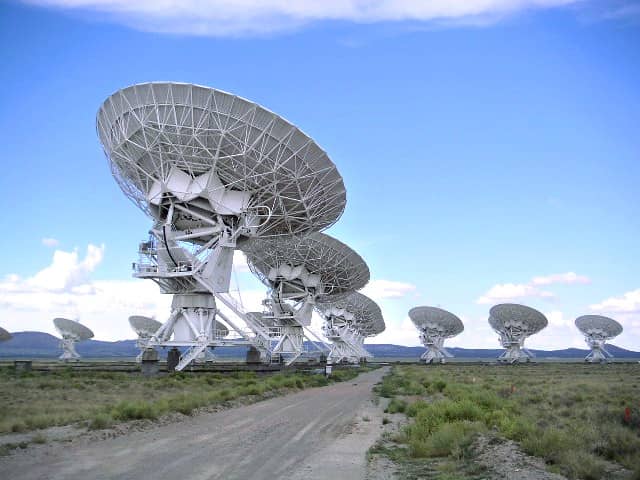
As far as orbital astronomy is concerned, the two most important projects in the coming years are China’s Xuntian and America’s Roman Observatory. Xuntian is often called the “Chinese Hubble.” Like its NASA predecessor, Xuntian will make observations in the visible as well as the near-infrared and ultraviolet ranges. Like Hubble, it is built with human maintenance in mind, involving the periodic replacement and repair of scientific instruments. Thanks to the presence of engines and its own navigation system, the module will be able to dock with the new Chinese orbital station, which will greatly simplify this task.
Xuntian will have a two-meter mirror, which should allow it to take pictures with a resolution comparable to that of Hubble. At the same time, the 2.5-gigapixel camera will provide the Chinese telescope with a field of view that is 300 times larger. The observatory’s main tasks will be cosmological research, searching for dark matter, and observations of various objects in the solar system and the Milky Way. China expects to launch it in 2024.
The Roman telescope is also often compared to Hubble, and it will have a similar 2.4-meter mirror. These projects cannot be called twins, however. First, Roman’s field of view will be about 100 times larger than Hubble’s. Secondly, it is intended for observations only in the infrared range. Thirdly, it will be equipped with a coronagraph – a device capable of filtering out the light of a star, thereby allowing scientists to directly study the objects circling around it.
Thanks to its coronagraph, Roman will be able to obtain the clearest ever images of protoplanetary and circumstellar disks, as well as find several thousand new exoplanets and take direct images of the largest ones. The telescope will be used to study the large-scale structures of the universe and the influence of dark matter on galaxies. Its launch is scheduled for 2027.
When thinking of the distant future, the most interesting prospect is another flagship observatory proposed by American astrophysicists, which is supposed to combine two telescopes being developed by NASA – the LUVOIR and HabE. The new observatory, which is planned to be equipped with a six-meter mirror, will be able to observe in the ultraviolet, visible and near-infrared spectra. This is what makes it a “real” replacement for Hubble.
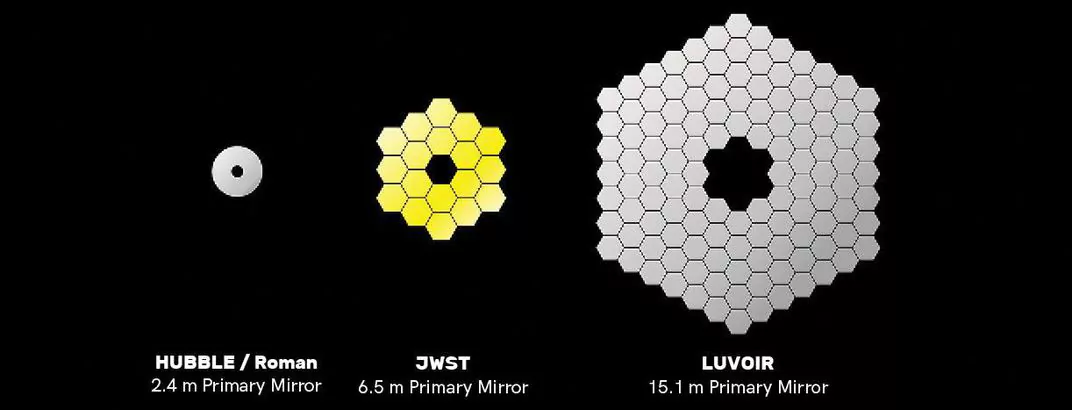
The preliminary cost of this project is estimated at $ 11 billion. If approved, its construction will begin at the end of this decade, with its launch taking place sometime at the dawn of the 2040s. Thus, the data it collects will be used by the next generation of astronomers.

